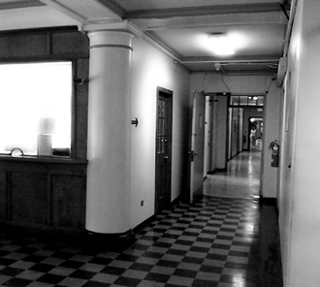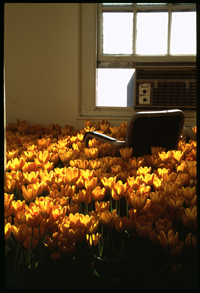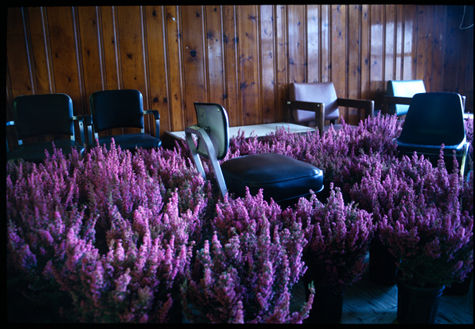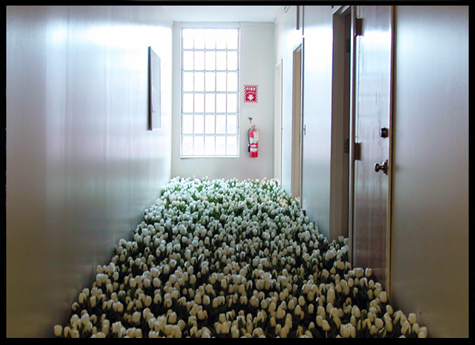Human Flower Project
Homage and Horror Vacui
An artist’s floral installation pays final tribute to Boston’s 90-year-old mental health center.

The barren Massachusetts Mental Health Center opened
to the public, blooming for four days before its demolition.
Photo: Bloom
“How does one memorialize a building impossibly rich with a history of both hope and sadness?” asks Christopher Jobson on his intriguing weblog Colossus (many thanks to Annie Ardery for pointing us this way).
 Tulips swarm an office on the third floor of the Massachusetts Mental Health Center
Tulips swarm an office on the third floor of the Massachusetts Mental Health Center
Photo: Anna Schuleit
Jobson’s question arose from the 2003 closing of the Massachusetts Mental Health Center in Boston; the building , nearly a century old, was to be demolished to make way for a new facility. And Jobson provides an answer: the installation called “Bloom” by artist Anna Schuleit.
Schuleit, who had created art in hospital environments before, was commissioned to create a finale for this old structure, something that might honor both the gravity of mental illness and the mission of healing.
“After an initial tour of the facility,” Jobson writes, Schuleit “was struck not with what she saw but with what she didn’t see: the presence of life and color.” She conceived of and then realized a stunning art installation with 28,000 potted flowers. Eighty volunteers assisted in making Bloom a public farewell through four November days before the Center was closed for good.

African violets carpet the hall between the Center and its research annex
Photo: Anna Schuleit
“The building meant many things to many people,” the artist told Jobson “ a workplace, a refuge, a place of confinement. The installation of live flowers and audio (a collage of the sounds of the building before it closed being played over the old PA system) elicited as many reactions as there are stories.” Jobson’s fine article reproduces some very moving responses from former patients and staff members.

Pink heather crowds in a waiting room
Photo: Anna Schuleit
“‘Never worry alone’ was a Dr. Tom Gutheil classic line,” wrote one visitor, “but because of the lack of social support, too many patients who came here had to worry alone. Anna saw these corridors as places to be filled with growth. For all the patients who never received flowers, these flowers are for you.”
We did not have the opportunity to have witnessed “Bloom” back in 2003. What a reckoning that must have been! Jobson alludes to the symbolisms of sympathy and memorial that flowers convey here, and we agree.

White tulips: the child psychiatry unit
Photo: Anna Schuleit
Yet we also find the installation powerful for its surrealism, one that in a benign and beautiful way manifests a dream or a manic reverie. Fronds of pink heather pooling about office chairs and a stream of African violets plunging down a corridor are the stuff of what once was called “madness.” Schuleit’s installation embodies centophobia— horror vacui – the compulsion to fill every empty space, whether a page of drawing paper overgrown with line or a livingroom cramped with stacked newspapers.
As a requiem for the Massachusetts Mental Health Center, Bloom saturates this place of “hope and sadness” with a frenzy of compassion.


Dear Julie,
Thank you for this beautifully rendered “work of love”.
This is a wonderful inspiration for me. From now on, as I walk the halls of the hospital here, I will envision the many-hued flowers of faith, hope, and love!
Your friend, Sam